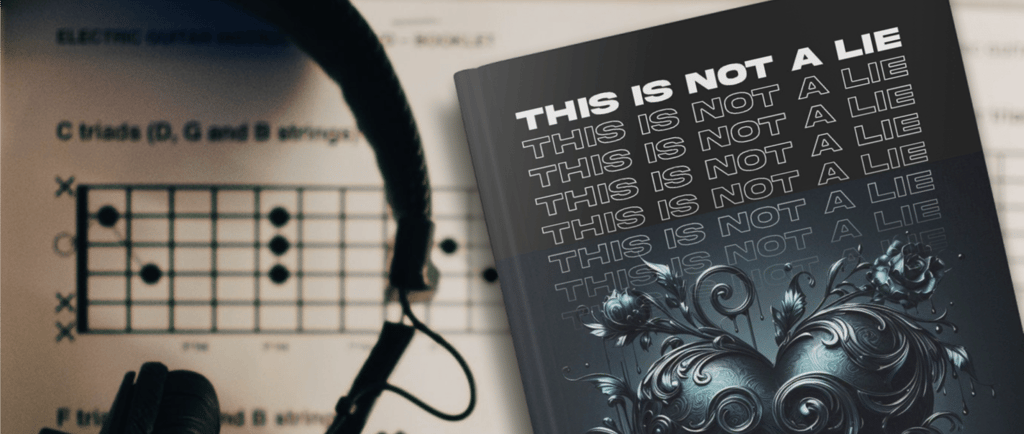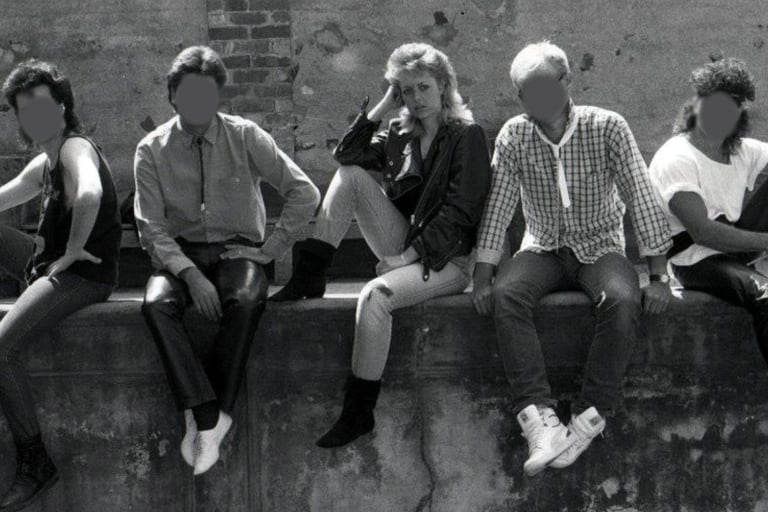This is Not a Lie
RHAPSODIES
S.C. Farrow
8/10/20207 min read


I was born in Melbourne in December, in the early 1960s. Raised in the southern suburbs, I was the only child of a single working-class mother. I was also rebellious, hated school, and gave my long-suffering parent untold mental and emotional grief. At the time, I loved two things: music and the beach, and indulged my love for both as frequently as possible.
My days were spent lazing on the sand at Sandringham Beach and my nights were spent in the city’s live music venues and clubs. I was fanatical about music. So much so that in my late teens and early twenties, I performed as a vocalist in local (and mostly forgettable) pub bands. It was one of the greatest times of my life, and for a few incredible years, I partied like a rock star. I partied so hard, in fact, that I woke up one morning and realised that if I didn’t stop partying like a rock star, I’d end up dead like a rock star, but that’s another story.
In 1977, when I was fourteen-years old, I dropped out of high school and went to work in a local factory making lampshades. It was there that I met the most beautiful man I had ever seen. He was seventeen, had big brown eyes, a wicked smile, and a mass of curly black hair. It was love at first sight. We dated on and off until the late 1980s.
In the 1980s, Melbourne was awash with illegal drugs. Heroin, speed, Mandrax, marijuana—whatever your poison, it was cheap, abundant, and easy to obtain. Struggling with cultural identity and the expectations of his immigrant parents, it wasn’t long before this beautiful man put his fear and anxiety in the hands of a new mistress—heroin.
It was during one of our ‘off’ times that I met and fell in love with another beautiful man. He was blond, had green eyes, and beautiful pouty lips. He was also a closet gay. We had a deep emotional connection—as well as an intimate relationship. For years, he was forced to hide his sexual identity from family and friends. When he finally did reveal his true self, he was spurned by his family and raped, bashed, and hospitalised by unrepentant bigots.
The years flew by and before I knew it, we had entered a new decade. Advances in technology meant worldwide socioeconomic change and the beginnings of globalisation. In 1984, the year in which this story is set, we ceased to be British citizens, Advance Australia Fair became our national anthem, and Medicare changed the face of health care. Thirty years later, the world, wary of war, terrorism, and global financial strife, crept nervously into the twenty tens.
Globalisation had become firmly established, cyber hacking threatened government secrets, and global warming changed the face of our planet. However, progress was made in the area of LGBTI rights. Acceptance of LGBTI people grew and Ireland became the first nation to legalize same-sex marriage.
NOBODY LIKES AN ADDICT
When people think of heroin addiction, they often think of wretched down-and-outers who have sold their soul in order to get high. While addiction does drive some to wretchedness, it’s hardly the whole story. Australia has had a long affair with heroin. It’s alleged that by 1936, Australian’s had consumed more heroin per capita than any other country in the world. Now, in the twenty-tens, our country’s suburbs are full of thirty and forty-year-olds who manage to hold down a job, raise a family, and use heroin daily. These people manage to keep their habit hidden, even from people close to them. Addiction doesn’t discriminate. In 1985, former Prime Minister Bob Hawke revealed his daughter Rosslyn was a heroin addict. The reality is that everyone is different, and not everyone who suffers from addiction turns to crime.
Despite common belief, one taste of heroin will not make you an addict. Hospital patients who are given morphine for pain relief rarely, if ever, become addicts. Physical addiction occurs as a result of repeated use, which ultimately changes the way a person’s brain interprets pleasure. People who are not directly affected by addiction find it hard to understand how it’s possible to devote yourself to a person who is hell-bent on facilitating their own demise, how it’s possible to care for someone who doesn’t seem to care about themselves. In the past, we punished addicts for being morally flawed or lacking in willpower. Science has proven this is simply not the case. Addiction hijacks the brain. It is a disease of the soul as much as it is of the body, and people who are in danger of losing themselves to it should be loved, treated, and supported.
The rise of modern media, especially social media, has allowed us to peer into the lives of celebrities to the point of obsession. We read about them on the Internet, follow them on Twitter, and sit in judgement as their lives either soar to unimaginable heights, or unravel before our eyes. Popular culture is replete with stories of drug addicted artists, writers, and musicians who, adored by legions of devoted fans, appear to lead fantastical lives and who have the means to fund not only their addictions, but legal support should they find themselves on the wrong side of the law. It’s only when these celebrities die that we realise they are mortal like the rest of us. And the irony, of course, is that they often become more famous and revered in the wake of their death.
While drugs and rock stars are not necessarily synonymous, the fact that many rock stars are also drug addicts, or have been drug addicts or alcoholics, is undeniable. In our own backyard, Marc Hunter (Dragon), Paul Hewson (Dragon), Steve Kilbey (the Church), Rick Grossman (the Divinyls and Hoodoo Gurus), James Freud (Models), Paul Kelly (Dots, Coloured Girls, Messengers), and Stevie Wright are just some who spring to mind. And then there’s the rumour that Angus and Malcolm Young considered firing Bon Scott from AC/DC after an accidental overdose.
NOBODY LIKES A CLICHE
As a creative writer, I am fascinated by the concept of the ‘tortured soul’, in particular the ‘tortured artist’. I am moved by highly creative and intelligent people who are hell-bent on self-destruction. It’s a motif that runs throughout much of my creative work. The idea of creative talent and tortured mind being sides of the same coin has long been debated. In a conversation with Socrates, fifth-century philosopher Plato contends that the Muses must inflict poets with a divine madness and argues that passionate people must be tightly controlled, if not actually banned from his imagined ‘ideal state’ because art and literature prod at people’s emotions with a force so powerful that it could actually cause harm.
These days, the tortured artist is a stock character in literature and motion picture films. The ‘tortured rock star’ is only the most recent incarnation of the troubled artist catalogue. Tortured artist characters are often portrayed as either extraverted and narcissistic, or introverted and self-loathing. They are aggrieved by their emotions and inner turmoil, they feel alienated and misunderstood, and they are disappointed by those who don’t support them. They are often portrayed as ideating suicide, engaging in substance abuse or self-mutilation, and as suffering from mental illness and/or depression. Their defining characteristic is that they are in constant torment due to frustrations with their art and/or with other people. These are the character’s tropes. These are traits that audiences expect to see in the tortured artist character. But then, nobody likes a cliché…
THIS IS NOT A LIE
Set in the early 1980s, This is Not a Lie is a trip back in time to when drugs, sex, and excess coloured Melbourne’s music scene and AIDS was still something that only happened to ‘other people’. All of the characters in this story are flawed and/or damaged. They are young, brash, and make ‘heat-of-the-moment’ decisions. Some characters are unlikable and one or two of them may be irredeemable, but I believe that is what makes them authentic.
Joel is not only a gifted guitarist, he is also a high-functioning heroin addict, and a closet homosexual. He is desperately lonely and dangerously self-destructive. He is a human being, masking deep emotional pain. He chooses to stay in the closet for the sake of his career. He sleeps with women while denying his true self. Drugs help dull the pain of his denial and like all junkies, he spends a considerable part of his day thinking about how and where he's going to score his next fix. This is an addict’s reality, whether it’s narcotics, alcohol, sex, food, gambling, shopping, video games, or adrenaline.
When I originally considered developing this concept as a novel, I became infatuated with it. For better or for worse, it was a story I felt compelled to tell. When I was accused of glorifying drug addiction, I considered abandoning the idea. Then I realised this is not a story that glorifies addiction. Neither is it a cautionary tale. Rather, this story is about overcoming personal challenges, finding meaning in existence, and above all, finding yourself in the face of adversity.
If nothing else, this story is a tribute to the two men whom I loved and lost. My dark-haired man was shot and killed during an event that never should have occurred; a direct result of his addiction. He was twenty-five years old. My blond-haired man, friendless, alienated, and unwell, took to his bed and died alone in his house. He was forty-four. I learned of his passing when his mother called me shortly after his landlord discovered his decomposing body.
Despite the negativity I faced in this story’s early days, I pressed on with it, all the more determined to see it finished. I could not have written this work if it weren’t for the two men to whom I gave my heart. When I think of them, my thoughts and emotions are mixed with love, sorrow, pride, and regret. Their impact on my life has been deep and I hope that wherever they are now, they are at peace.
Finally, despite the elements of truth in this narrative, it is a fictional narrative. It is a love story in which the main character just happens to be gay and a drug addict. As such, the world presented will be foreign to many, evil to some, and worthless to others. In it, you will see what you want to see, love what you want to love, and hate what you want to hate. If it makes you uncomfortable, good. Life isn’t always a picnic, and we must never forget that it is less of a picnic for some than it is for others.
Writing a novel
Novel writing
About writing This is Not a Lie


S.C. Farrow in 1984
© 2024. All rights reserved
In the spirit of reconciliation, we acknowledge the Traditional Custodians of Country throughout Australia and the Torres Straight Islands and their connections to land, sea, and community. We pay our respects to elders past and present and extend that respect to all First Nations and Torres Strait Islander peoples today.
ABN: 19 569 432 238





